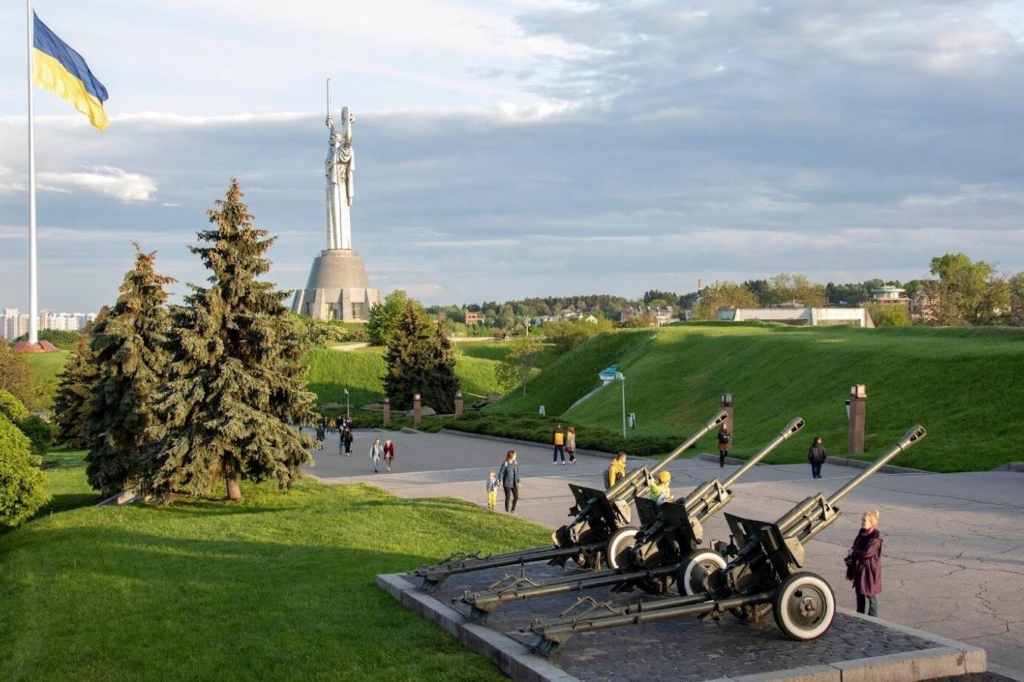
Your visit
Website
Opening hours:
Mon: closed
Tue, Wed, Thu, Fri: 10:00-16:30
Sat, Sun: 10:00-17:00
Adress:
Lavrska Str., 27
Kyiv, Ukraine
Comparative questions
What narrative is offered to the visitors?
The museum narrative is centered around the idea that war is a tragedy that should be avoided at all costs. It emphasizes the importance of remembering the past, and of working for peace.
The museum’s narrative is both hopeful and cautionary. It reminds visitors of the dangers of war, but it also offers hope for a better future.
Is there a person or a group, the narrative is centered around?
The narrative is centered around the experiences of ordinary people, both soldiers and civilians. It highlights the courage and resilience of those who survived the war.
The museum’s narrative is not about heroes or villains. It is about the human cost of war, and the importance of remembering those who were affected by it.
Are pictures or images important in the construction of the museum narrative?
Yes, pictures and images are very important in the construction of the museum narrative. They help to convey the scale and horror of war, and to personalize the experiences of those who were affected by it.
The museum uses a variety of images, including photographs, paintings, and sculptures. These images are often accompanied by text that provides context and interpretation.
Some of the most memorable images in the exhibition include:
- A photograph of the liberation of a concentration camp
- A painting of a battle from the war
- A sculpture of a soldier who has been killed in battle
Are there objects, Documents or Testimonies?
All of these are important in the construction of the museum narrative. Objects help to create a sense of immediacy and authenticity, while documents and testimonies provide first-hand accounts of the war.
The museum uses a variety of objects, documents, and testimonies to tell the story of the war. These materials are displayed in a variety of ways, including exhibits, films, and interactive displays.
What kind of knowledge was imparted?
Visitors gain a broad understanding of the Second World War, including its causes, course, and consequences. They also learn about the experiences of different groups of people who were affected by the war, including soldiers, civilians, and victims of the Holocaust.
The museum’s educational mission is to provide visitors with the knowledge and understanding they need to make informed decisions about the future.
Further Questions
What approach to war does the museum present?
The National Museum of the History of Ukraine in the Second World War presents a comprehensive approach to war, covering its political, military, social, and cultural dimensions. It emphasizes the human cost of war, and the importance of remembering and learning from the past.
The museum begins by providing a historical overview of the war, from its causes to its consequences. It then explores the war in more detail, focusing on specific events, campaigns, and battles. The museum also examines the impact of the war on different groups of people, including soldiers, civilians, and victims of the Holocaust.
The museum’s approach to war is both informative and educational. It provides visitors with a deep understanding of the war, and it encourages them to think critically about its causes and consequences.
What objects represent war in the exhibition?
The exhibition includes a wide variety of objects that represent war, including:
- Weapons and military equipment
- Personal belongings of soldiers and civilians
- Photographs, paintings, and other works of art
- Documents and artifacts related to the Holocaust
These objects help to create a vivid and sensory experience of war. They allow visitors to see, touch, and hear the war, and they help them to understand its impact on people’s lives.
Some of the most powerful objects in the exhibition include:
- A collection of weapons and military equipment from the war, including tanks, guns, and bombs
- A display of personal belongings of soldiers and civilians, including letters, diaries, and photographs
- A film of the Holocaust, showing the atrocities committed by the Nazis
What kind of experience is offered?
The museum experience is both educational and emotionally powerful. Visitors are left with a deep understanding of the human cost of war, and a renewed commitment to peace.
The museum is a moving and unforgettable experience. It is a place to learn about the past, to reflect on the present, and to commit to a better future.
Is there a political, philosophical or moral explanation of the war?
The museum does not offer a single explanation of the war. Instead, it presents a variety of perspectives, including political, philosophical, and moral.
The museum encourages visitors to think critically about the causes and consequences of the war. It does not offer easy answers, but it does provide visitors with the information they need to form their own opinions.
My Impression
Links
https://war-documentary.info/ww2-memorial-kiev/